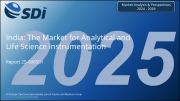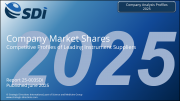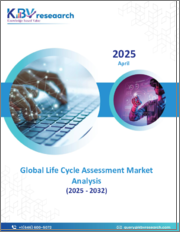
|
시장보고서
상품코드
1518909
자동화를 통해 혁신적 성장을 주도하는 세계 생명과학 기기 및 연구 툴 시장(2023-2029년)Life Science Instrumentation and Research Tools Driving Transformational Growth through Automation-Global, 2023-2029 |
||||||
학계의 실험실 예산이 꾸준히 증가하면서 혁신이 촉진되고 있습니다.
이 보고서는 실험실에서 사용되는 화학물질, 소모품, 장비, 시약, 공급업체, IT 솔루션을 포괄하는 생명과학 기기 및 연구 툴 산업을 분석합니다. 세계 생명과학 기기 및 연구 툴 시장은 2023년부터 2029년까지 꾸준한 성장세를 보일 것으로 예상되며, 실험실 자동화 및 소프트웨어 솔루션이 주요 원동력으로 작용하여 큰 수익을 창출할 것으로 전망됩니다. 생명과학 연구 비용이 상승하고 예산이 제한됨에 따라 장비와 기기에 대한 기존의 판매 방식은 비효율적이라는 것이 밝혀지고 있습니다. 모든 장비를 구매하지 않고도 새로운 기술에 대한 접근성을 제공할 수 있는 새로운 비즈니스 모델이 절실히 요구되고 있습니다. 또한 첨단 현미경, 유전자 편집, 차세대 염기서열 분석(NGS)과 같은 새로운 첨단 기술의 등장으로 워크플로우 최적화를 위한 통합 장비, 소프트웨어 및 서비스 솔루션에 대한 수요도 증가하고 있습니다.
이 보고서는 생명과학 기기 및 연구 툴 산업의 성장을 가속하고 억제하는 요인에 대해 조사했습니다. 응용 분야에는 학술 및 정부 기관 사용, 임상 진단, 제약, 생명공학 등이 포함됩니다. 북미, 유럽, 아시아태평양(APAC), 라틴아메리카, 중동, 아프리카, 남아시아(MEASA)의 사례연구가 수록되어 있습니다. 또한 시장 수익과 예측뿐만 아니라 산업 부문, 규제 환경, 새로운 비즈니스 모델을 평가하여 업계가 제공하는 주요 성장 기회도 파악합니다.
목차
생명과학 기기 및 연구 툴 트랜스포메이션
- 왜 성장이 어려워지고 있는가?
- The Strategic Imperative 8(TM)
- 생명과학 기기 및 연구 툴 업계에 대한 주요 전략적 필수 요건의 영향
에코시스템
- 분석 범위
- 세분화
- 정의
- 경쟁 환경
- 생명과학 기기 및 연구 툴 에코시스템
- 주요 경쟁사
성장 제너레이터
- 성장 지표
- 성장 촉진요인
- 성장 억제요인
- 예측에 관한 인사이트
- 매출 예측
- 매출 예측 분석
- 가격 동향과 예측 분석
- 제품별, 매출 예측
- 제품별, 매출 비율 예측
- 제품별, 매출 예측 분석
- 기술별, 매출 예측
- 기술별, 매출 비율 예측
- 기술별, 매출 예측 분석
- 업계별, 매출 예측
- 업계별, 매출 비율 예측
- 업계별, 매출 예측 분석
- 지역별, 매출 예측
- 지역별, 매출 비율 예측
- 지역별, 매출 예측 분석
- 매출 점유율
- 매출 점유율 분석
성장 제너레이터 : NGS
- 성장 지표
- 매출 예측
- 지역별, 매출 예측
- 예측 분석
- 주목해야 할 주요 기업
성장 제너레이터 : PCR
- 성장 지표
- 매출 예측
- 지역별, 매출 예측
- 예측 분석
- 주목해야 할 주요 기업
성장 제너레이터 : 마이크로어레이
- 성장 지표
- 매출 예측
- 지역별, 매출 예측
- 예측 분석
- 주목해야 할 주요 기업
성장 제너레이터 : 유세포분석기
- 성장 지표
- 매출 예측
- 지역별, 매출 예측
- 예측 분석
- 주목해야 할 주요 기업
성장 제너레이터 : 질량 분석
- 성장 지표
- 매출 예측
- 지역별 매출 예측
- 예측 분석
- 주목해야 할 주요 기업
성장 제너레이터 : 기타(분석화학, 실험실 자동화, LIMS, 인포매틱스, 분광법, 재료 분석, 크로마토그래피)
- 성장 지표
- 매출 예측
- 지역별 매출 예측
- 예측 분석
- 주목해야 할 주요 기업
성장 기회
- 성장 기회 1 : 고밀도 프로테오믹스를 위한 고급 질량 분석 도구
- 성장 기회 2 : 아태 지역 임상 진단을 위한 실험실 자동화 솔루션
- 성장 기회 3 : 기기 및 장비의 전자상거래 비즈니스 모델
- E-Commerce 모델 채택 촉진요인
베스트 프랙티스 인식
Frost Radar
다음 단계
LSH 24.07.30A Steady Increase in Laboratory Budgets in Academia is Driving Innovation
This study analyzes the life science instrumentation and research tools industry, covering the chemicals, consumables, instruments, reagents, suppliers, and IT solutions used in research laboratories. The global market for life science instrumentation and research tools is projected to experience steady growth from 2023 to 2029, achieving significant revenue milestones, driven largely by laboratory automation and software solutions. As life science research becomes more expensive and budgets more constrained, traditional sales approaches to instruments and equipment are proving inefficient. There is an urgent need for new business models that can provide access to novel technologies without necessitating the purchase of all the equipment. There is also a greater demand for integrated instruments, software, and service solutions for workflow optimization, driven by the emergence of novel and advanced technologies like advanced microscopy, gene editing, and next-generation sequencing (NGS).
This study examines the factors driving and restraining the growth of the life science instrumentation and research tools industry. Application areas include academic institutes and governmental uses, clinical diagnostics, pharmaceuticals, and biotechnology. This research offers case studies from North America, Europe, Asia-Pacific (APAC), Latin America, and the Middle East, Africa, and South Asia (MEASA). It also identifies the core growth opportunities presented by the industry by evaluating industry segments, the regulatory environment, and emerging business models, as well as market revenue and forecasts.
Table of Contents
Transformation in Life Science Instrumentation and Research Tools
- Why is it Increasingly Difficult to Grow?
- The Strategic Imperative 8™
- The Impact of the Top 3 Strategic Imperatives on the Life Science Instrumentation and Research Tools Industry
Ecosystem
- Scope of Analysis
- Segmentation
- Definitions
- Competitive Environment
- Life Science Instrumentation and Research Tools Ecosystem
- Key Competitors
Growth Generator
- Growth Metrics
- Growth Drivers
- Growth Restraints
- Forecast Considerations
- Revenue Forecast
- Revenue Forecast Analysis
- Pricing Trends and Forecast Analysis
- Revenue Forecast by Product
- Percent Revenue Forecast by Product
- Revenue Forecast Analysis by Product
- Revenue Forecast by Technology
- Percent Revenue Forecast by Technology
- Revenue Forecast Analysis by Technology
- Revenue Forecast by Industry
- Percent Revenue Forecast by Industry
- Revenue Forecast Analysis by Industry
- Revenue Forecast by Region
- Percent Revenue Forecast by Region
- Revenue Forecast Analysis by Region
- Revenue Share
- Revenue Share Analysis
Growth Generator: NGS
- Growth Metrics
- Revenue Forecast
- Revenue Forecast by Region
- Forecast Analysis
- Key Companies to Watch
Growth Generator: PCR
- Growth Metrics
- Revenue Forecast
- Revenue Forecast by Region
- Forecast Analysis
- Key Companies to Watch
Growth Generator: Microarrays
- Growth Metrics
- Revenue Forecast
- Revenue Forecast by Region
- Forecast Analysis
- Key Companies to Watch
Growth Generator: Flow Cytometry
- Growth Metrics
- Revenue Forecast
- Revenue Forecast by Region
- Forecast Analysis
- Key Companies to Watch
Growth Generator: Mass Spectrometry
- Growth Metrics
- Revenue Forecast
- Revenue Forecast by Region
- Forecast Analysis
- Key Companies to Watch
Growth Generator: Others-Analytical Chemicals, Lab Automation, LIMS, Informatics, Spectroscopy, Material Analysis, and Chromatography
- Growth Metrics
- Revenue Forecast
- Revenue Forecast by Region
- Forecast Analysis
- Key Companies to Watch
Growth Opportunity Universe
- Growth Opportunity 1: Advanced Mass Spectrometry Tools for High-plex Proteomics
- Growth Opportunity 2: Laboratory Automation Solutions for Clinical Diagnostics in APAC
- Growth Opportunity 3: Growth Opportunity 3: eCommerce Business Model for Instruments and Equipment
- Drivers for eCommerce Model Adoption
Best Practice Recognition
- Best Practice Recognition
Frost Radar
- Frost Radar
Next Steps
- Benefits and Impacts of Growth Opportunities
- Next Steps
- Take the Next Step
- List of Exhibits
- Legal Disclaimer



















